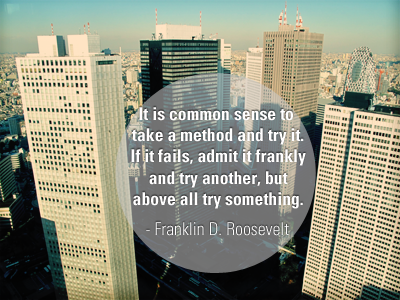06 Oct Is B2P the New B2B?
I recently read an article about how B2B marketing is changing very rapidly, and how a lot of B2B marketing is failing because of the buyer. According to the article:
“Studies continue to confirm that, when it comes to making a buying decision, they have more access to technology, more interaction with their peers via social networks, less need for vendor-driven information, and less reliance on salespeople. Marketers are struggling with this new dynamic. Amid the morphing of the buyer and, subsequently, the B2B environment, marketers are failing to convince buyers to buy their products or services. Why? Because there remains one constant no matter how technology-driven or socially enabled we become. That one constant (and many fail to understand it) is that we market and sell to people.”
In advertising we learn that an emotional connection is one of the most powerful advertising tools. Whether it’s humorous, touching, enraging, etc. an emotional connection captures attention. Psychology shows us that an emotional element can even help us encode memories (brand recognition and recall anyone?). It’s not always the details that are important, but the brand placement in the mind of the target market that will win sales.
B2B marketing is often touted as being different than B2C marketing because you’re marketing to an organization – a decision-maker – but ultimately, like the article states, you’re marketing to people. These people are the same ones who go home and laugh at the latest Doritos commercial, or tear up from the “Dear Sophie” commercial.
Why does B2B marketing factor out the human element?
B2B marketing may be a horse of a different color, but it’s a still horse. Studies show time after time that decision-makers for businesses require more information for purchases, and decisions are made rationally. Marketers happily comply and the majority cater a one-size-fits-all solution of informational collateral because of this.
Why? It could be as simple as because everyone else does it. “X competitor is sending out brochures, let’s send out brochures, too!”
Sometimes it may come down to simply accepting the status quo (business as it’s always been done) because it is cheaper and easier than change.
Understanding people is HARD. What do people want, how do they want it, why do they want this over that….all very tough questions to answer, but very important to answer.

Why B2B marketers need to think like B2P marketers
In some aspects, B2B marketers do try to appeal to the human element. They list their clients to try to build trust (“If Reputable Organization uses their products/services they MUST be trustworthy”) and create desire (“I want to use the same products/services Reputable Organization does!”), pick the right color for their logo and website (“Reputable Organization uses blue – they must be serious!”), but that’s where it seems to stop in a lot of cases.
Again, the decision-makers you’re appealing to with your marketing campaigns are people. They have emotional preferences. Comparing apples to apples, many competing companies have similar features, pricing, and value. When this occurs, it may come down to an emotional value provided by the company, even if this happens unconsciously in the decision-maker. Humans are creatures of preference.
In relationships, you don’t win a person over by talking about yourself the whole time, you win because of how you make that person feel. True, sometimes your features can impact how that person feels and can be responsible for getting you in the door, but ultimately it’s that warm fuzzy feeling that seals the deal. Successful campaigns focus on the benefit to the customer, “If you use OUR product you’ll….” and not just the features.
Humans are also creatures of judgement. When they view your website, they make a judgement, when they see your ad, they make a judgement. When they see the salesperson contacting them is named Kathy like their awful ex-wife, they make a judgement. If it’s dis-interesting or unappealing, they may not even see your features and benefits. When they can’t find information they’re looking for, they become frustrated, when they see a bland design they become bored. All emotional factors.
It’s important to not factor out the human element in B2B marketing, simply because your potential customer is another business. Narrow your target market for various marketing campaigns, make your brand personable, use your existing customer-base to determine why they chose you in the first place – don’t continue to leave out the human element.




Sorry, the comment form is closed at this time.